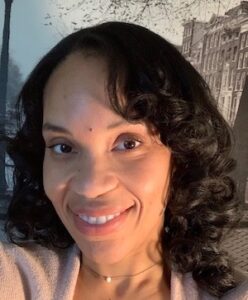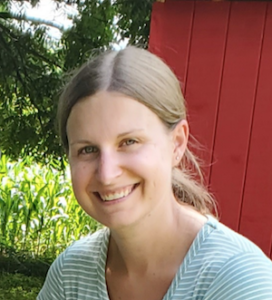2020 Endorsed Teachers

Ayesha Harrell, New Jersey
Years Teaching Tools: 15 years
1. What is your favorite thing about teaching Tools of the Mind?
My favorite thing about Tools is the ability to imagine! The curriculum fosters learning through mature play by using prop-making, role playing, and the beautiful natural born ability to make-believe! This is absolutely my favorite part of Tools, and the children’s as well.
2. What impact has Tools had on the children in your classroom and/or program?
Tools provides opportunities for all children including those who come from homes with less experience and exposure. Tools provides an extra layer of school readiness! It not only exposes children to an array of skills, but it fosters language, positive social interaction, mature play, experiences, and a love for and pride in learning.
3. What makes a Tools of the Mind classroom different?
Tools meets each child at their specific level. Children come into the classroom at varying ages from 3-years-old to 5-years-old with equally varying skills, backgrounds, development and self-regulation, and in Tools, they can thrive in the same classroom. Tools caters to each of those varying levels, promoting every child’s growth and success.
4. What would you say to a teacher or a program considering implementing Tools of the Mind?
If they are looking to teach young learners in a new way that strays away from cookie cutter techniques, this is the program for them. They will constantly evolve and grow as a teacher to meet the needs of children with varying skills and experiences.

Stephanie Tamn, New Jersey
Years Teaching Tools: 4 years
1. What is your favorite thing about teaching Tools of the Mind?
To pick one favorite part of the Tools curriculum is tricky! One aspect of the Tools curriculum that I really like is Play Planning. There is so much that goes on developmentally during this time. Self-regulation skills, cognitive skills, and literacy development are all being addressed during this time. In my classroom of three-year-olds, every one of my students is at a different developmental level. Play Planning is a great activity to engage in one-on-one scaffolding. Each child is scaffolded by me as a teacher, and they also scaffold other students, and I love that!
2. What makes a Tools of the Mind classroom different?
I have been teaching in the Early Childhood profession for about 12 years now. I have taught many different curriculums in the past. Tools of the Mind is by far one of the best curriculums that I have used. Learning through play is one of the best ways to teach, especially children at a young age. Many curriculums touch on this aspect, but I believe the Tools curriculum takes it to a different level. Learning through real-life scenarios and roles are ways that a child can not only learn about the real word, but learn key skills along the way.
3. What do teachers learn in Tools of the Mind professional development?
Not only do teachers learn how to implement the curriculum, but you also learn about child development and key skills that will help a child to be successful in life and learning in the future!
4. What would you say to a teacher or a program considering implementing Tools of the Mind?
The Tools of the Mind curriculum is a wonderful, well-rounded curriculum. You not only teach your students academics, but also self-regulation skills that help tremendously in creating an atmosphere where children can reach their full potential.